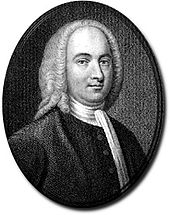Who We Are
Who We are in Christ, Facing the 21st Century
We, the members of the Associate Reformed Presbyterian Church, in order to carry out God’s mission and move forward together into the next century, profess our life together in Christ and our desire to set forth a united strategy for the work of His church. We express our desire to continue to be a Presbyterian and Reformed church committed to the Lordship of Jesus Christ and to the Bible as the Word of God.
Rooted in and shaped by a living tradition, we are part of the new creation in Christ which God is bringing into existence. Therefore, we are committed to:
- The worship of the Triune God.
- The Holy Scriptures as the basis for our faith and activity.
- Unity with other believers in Christ.
- Total stewardship of life, including tithing of time, talents, and money.
- Excellence in education and equipping leaders for tomorrow.
- Loving and caring for one another and for other people.
- Spreading the Gospel to all parts of the world.
- Evaluating and changing church structures and priorities in order to meet the challenges of the future while preserving the best of the past.
To this end and in humble reliance upon the enabling power of the Holy Spirit, we covenant together to pray steadfastly that God will open doors of opportunity so that we may declare the riches of Christ.
“Let us not grow weary in well-doing,
for in due season we shall reap,
if we do not lose heart” (Galatians 6:9).
Minutes, 1990 General Synod, Page 363;
reaffirmed by the General Synod June 13, 2001.
Our foundational doctrinal statements are found in The Standards of the Associate Reformed Presbyterian Church, which we hold to be “the system of doctrine which is built upon the foundation of the apostles and prophets, Jesus Christ himself being the chief cornerstone” (Associate Reformed Synod, May 31, 1799).
History

John Knox
The Associate Reformed Presbyterian Church as we know it today comes to us across a lengthy history of service in two lands, the British Isles and North America. It had its beginnings in the preaching of John Knox in Scotland when the Scottish Church became the official church of Scotland in 1560 A.D. As always the case when the church and state become too closely allied, controversy and bitter strife over control became a way of life for church and state alike.
Things improved somewhat under King William III in 1688 A.D. as he reorganized the Church of Scotland into the Established Presbyterian Church of Scotland. In spite of the improvement, however, a great number of problems still existed, and in 1733 a pastor by the name of Ebenezer Erskine led a group of Christians in forming a separate Associate Presbytery (from thence comes the first part of our name). Ten years later, another group of Christians who for years had suffered problems with the established church organized themselves into the Reformed Presbytery.

Ebenezer Erskine
Both churches spread to Northern Ireland as the Scots were forced to emigrate and both came to America with those “Scots-Irish” folks. The immigrants came to the Pennsylvania area at first, and it was there that both the Associate and the Reformed Presbyteries of Pennsylvania were organized in the 1750-1770 time period.
It was a heady time in the new world, and all the “old alliances” were being called into question. The new America was emerging and at the same time our forefathers were seeking to create a new church as well. Formal union talks between the “Associates” and the “Reformed” began in 1777 and by 1782 the Associate Reformed Synod came to be in Philadelphia. This Synod, even though all “Associates” and “Reformeds” did not join, included churches in Pennsylvania, New York, Ohio, North and South Carolina and Georgia.
Eight years later, the Associate Reformed Presbytery of the Carolinas and Georgia was formed in Abbeville County, S.C., followed some twenty years later (1803) by the division of the entire church into four Synods and one General Synod. The Synods were those of the Carolinas, Pennsylvania, New York and Scioto with the headquarters of the church in Philadelphia. In 1822 the Synod of the Carolinas was granted separate status, and by the end of the century was the sole remaining body of the Associate Reformed Presbyterian Church as several mergers over the years had absorbed the rest of the denomination into the old United Presbyterian Church. The remaining “A.R.P.s” in the Southeast continued on as the denomination we have today.
